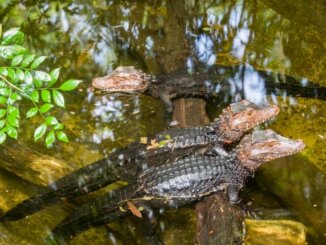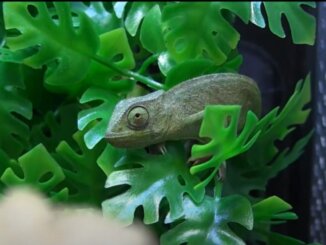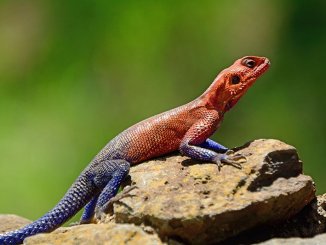The pink tongue skink, or pink-tongued skink, is a large, slender, terrestrial Australian species of lizard. These lizards have grayish bodies, large heads, and bright pink tongues. Their tongues differentiate this skink from most other blue-tongued lizards.
Caring for a pink tongue skink is easy because the lizard is docile and can be easily tamed and handled from a young age.
Pink-Tongued Skink Overview
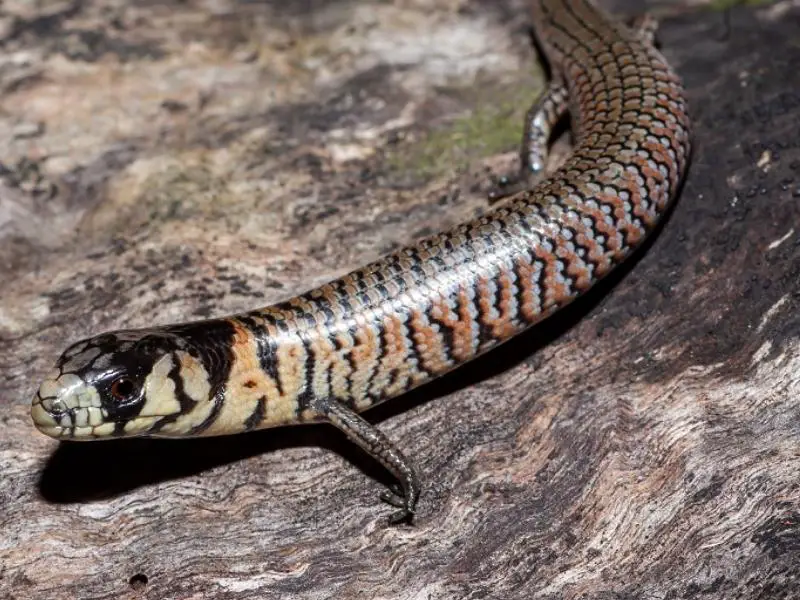
| Common name | Pink tongue skink, pink-tongued skink, pink-tongued lizard |
| Scientific name | Cyclodomorphus gerrardii |
| Natural habitat | Humid burrows and dry, arid grasslands in Australia |
| Adult size | 15–18 inches |
| Average lifespan | 15–20 years |
| Diet | Omnivore |
| Housing | Minimum 10 gallons, 75–80°F, 70–90% humidity |
| Experience level | Beginner |
Origin
The pink tongue skink (Cyclodomorphus gerrardii) inhabits dry, arid grasslands, rainforests, and moist wetlands. These areas are in coastal and upland regions spanning from New South Wales to Queensland in Australia. This species is common in the wild.
Appearance and Behavior
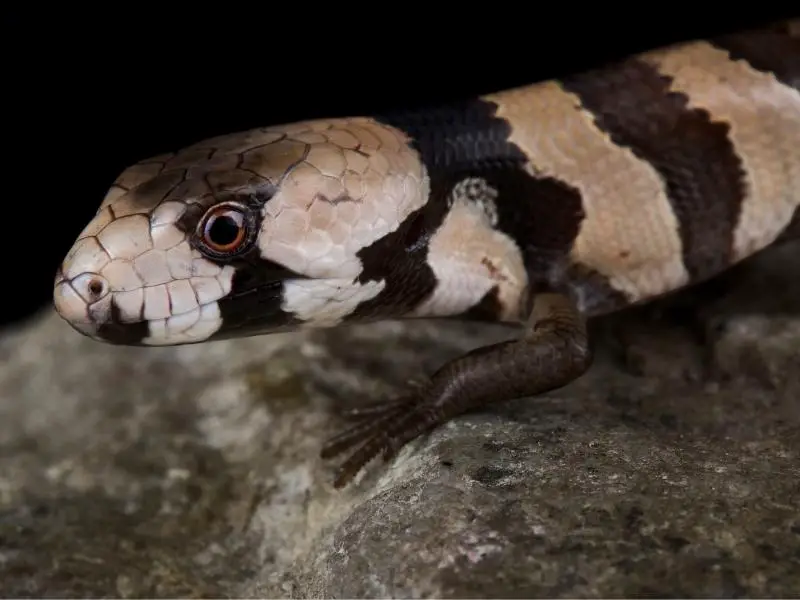
The pink tongue skink is a large lizard with a long, slender body and a long tail adapted to grasp objects. The lizard has well-developed limbs, a large head, and sharp claws.
This species appears in fawn or slate gray coloring, with black or dark-gray cross-bands. The lizard’s scales are smooth, and the head scales are black-edged.
Adult pink tongue skinks have darker snouts and fewer dark spots on the head than juveniles. Babies have blue tongues and look similar to Eastern blue tongue skinks.
As the lizards grow, their tongues lighten from blue to pink. Full-size pink tongue skinks have slimmer bodies and longer, narrower tails than Eastern blue tongue skinks.
The species’ natural habitat is hot and dry, so the lizard spends most of its time in humid burrows.
Size and Lifespan
Pink tongue skinks grow up to 18 inches long.
Males and females are the same sizes, though males have bigger heads. Females have more rounded abdomens and males have more pronounced cross-bands.
The average lifespan of a pink tongue skink is 15 years. When housed in a sanitary, stress-free environment, the lizard can live up to 20 years.
Temperament
The pink tongue skink is a shy, skittish lizard that can be trained to get used to human interaction. This lizard has a gentle temperament and is safe to handle.
Be wary of housing pink tongue skinks together because they’re prone to fighting amongst themselves — especially the males. Females can live together when introduced gradually into a large enclosure.
This species becomes stressed by constant changes to its environment, poor-quality living conditions, loud noises or sudden movements, and temperatures that exceed its maximum or minimum requirements.
Housing Pink Tongue Skinks
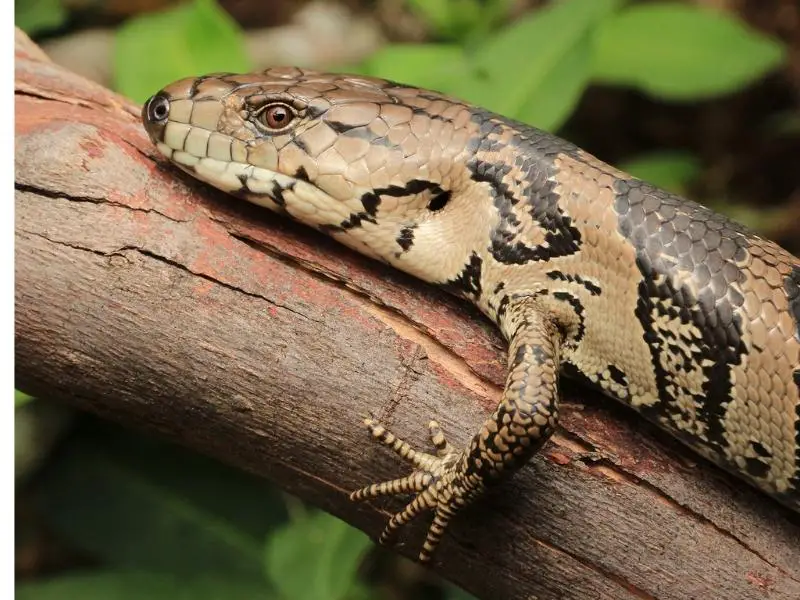
The pink tongue skink’s natural environment is dry grasslands and damp rainforests in Australia. The lizard is adapted to hot climates, and shelters in hollow logs, underneath leaf litter, and in humid burrows underground. Provide a similar subtropical habitat for the lizard in captivity.
The best type of enclosure for a pink tongue skink is a vivarium with a tight-fitting lid.
Enclosure size
Pink-tongued skinks are bigger than most lizards and need a medium-sized enclosure that’s at least 10 gallons, or 48-by-24-by-24 inches. A 20- or 30-gallon tank is ideal.
The lizards are terrestrial, but they enjoy climbing and burrowing, so the enclosure should be tall enough to accommodate a deep substrate and tall branches.
Lighting
Pink tongue skinks don’t have specific lighting requirements. As long as the lizards are exposed to natural daylight from a nearby window, they’ll be healthy.
Optionally, install a UVB lamp in the tank to help increase the lizard’s calcium absorption. Place the lamp in the middle of the tank and set it on a 12-hour timer, so that it switches off overnight.
Temperature and Humidity
The pink-tongued skink is cold-blooded and regulates its temperature by moving between hot and cool environments. Set up a temperature gradient in the enclosure, with a warm section and a cool section, to keep the lizard comfortable.
One-third of the tank should be the basking area, with a constant temperature of 80°F. This temperature can be maintained with a heat lamp and a heating pad. The other two-thirds of the tank should be 75°F during the day, and 70°F overnight, to reflect the nighttime temperature drop in the wild.
Pink tongue skinks need high humidity levels of 80% to 90%. To maintain consistent humidity levels, mist the tank several times a day and leave a full bowl of water in the tank at all times. High humidity levels assist the lizards with shedding, so don’t allow humidity to drop below 70%.
Use a thermometer and a hygrometer to keep track of the enclosure’s temperature and humidity levels throughout the day.
Substrate and Decoration
The best substrate for a pink tongue skink’s enclosure is cypress mulch, which balances humidity levels and replicates the leaf litter substrate in the wild. Soil-based substrates, bark chips, and aspen shavings are other good options.
Ensure the substrate is at least 4 inches deep to allow the lizard to burrow. Avoid sharp, abrasive substrates that could scratch the lizard’s body.
Artificial plants, reptile hides, flat rocks, caves, and pieces of driftwood are all good decorations for a lizard tank. Provide at least two hiding spots for the lizard, and at least one branch for climbing.
Pink tongue skinks usually sleep in their own burrows and don’t need specific bedding.
Cleaning
Pink tongue skinks aren’t messy lizards, but their enclosures will still need daily spot cleans to prevent a buildup of waste. To spot-clean a tank, remove soiled or dirty substrate and replace it with clean, fresh substrate. Remove the water bowl, rinse it out, and refill it with clean water.
Deep clean the enclosure once every two weeks. First, rehouse the lizard in a temporary enclosure.
Remove and discard all the substrate, take out any plants and greenery, and place the washable decorations in a bucket of hot, soapy water. Wipe down the inside of the enclosure with a sponge dipped in warm water and dish soap. Use a clean cloth to dry the enclosure.
Remove the decorations from the bucket of hot water and rinse them off. Leave them to air-dry while you add fresh substrate to the clean enclosure. Place the dry decorations and plants back in the enclosure before returning the lizard.
Pink Tongue Skink Care
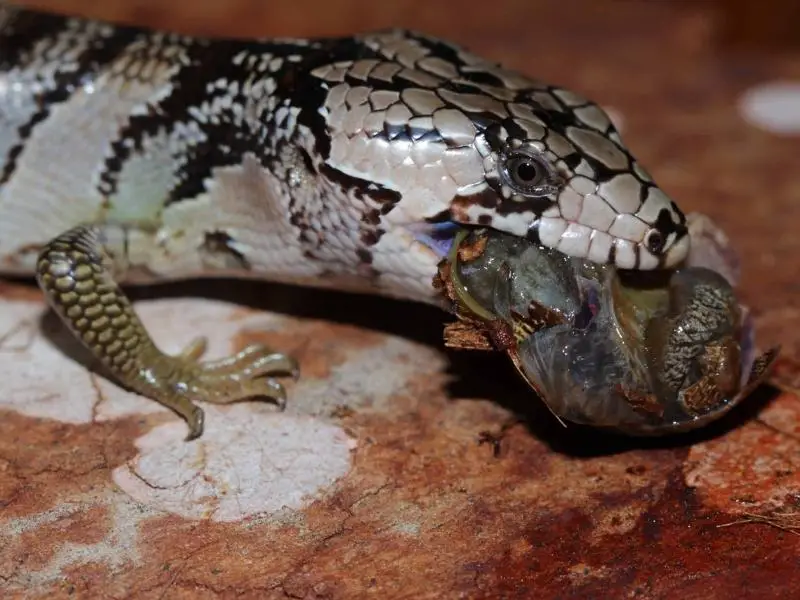
The pink tongue skink is easy to care for. The lizard needs a variety of proteins and plant-based foods, a clean water supply, and sanitary tank conditions.
Food and Water
Pink-tongued skinks are omnivores, meaning they eat both meat and plants, and aren’t picky with food. Provide the lizards with a range of small protein sources, like mealworms, waxworms, snails, crickets, earthworms, and canned cat food.
The lizards also enjoy fruits like raspberries, mangoes, and bananas. Don’t feed the lizards spinach, kale, romaine lettuce, or rocket because these foods prevent reptiles from absorbing calcium properly.
Feed an adult pink tongue skink three times a week. Juveniles should be fed small portions every two days. Place the food in a shallow bowl, and remove the bowl when the skink has finished eating, even if there’s food leftover.
Pink tongue skinks need constant access to a water supply, so leave a bowl of water in the enclosure for the skink to drink from throughout the day.
Handling
Pink tongue skinks are more tolerant to handling than most other reptile species. At first, the lizards are skittish, and they require patience and gentleness from the handler.
To handle a pink tongue skink, follow these steps:
- Wash your hands
- Carefully reach into the enclosure and scoop the lizard up in your hands, with one hand under the front legs and one under the hind legs. After a couple of minutes, return the lizard to the substrate
- Repeat this process once a day for a week, until the lizard is used to the feel of your hands
- After a week, follow the same process to scoop the lizard into your hands, but this time, lift the lizard out of the tank and place it on a warm, stable surface like your chest
Handle the lizard for a maximum of five minutes per day to prevent stressing the species. Pink tongue skinks have long, sharp claws, so be gentle, and always supervise children during handling.
Common Health Issues
Pink tongue skinks are healthy, hardy creatures, but you should still watch out for potential health issues.
Obesity
Obesity is a common problem for reptiles in captivity and is caused by an owner’s ignorance of the reptile’s natural feeding habits. To prevent obesity in your pink tongue skink, don’t allow the skink to overeat.
Remove the food bowl after the skink has eaten all it can eat in one sitting, and encourage activity in the enclosure with climbing and burrowing opportunities.
Shedding problems
Inadequate humidity levels, skin infections, and malnutrition can all cause shedding issues for a pink tongue skink. Shedding in reptiles usually happens in patches, and skin that doesn’t come off during a shed can dry up and constrict around certain body parts.
Address shedding problems by ensuring the temperature and humidity are optimal. Speak to your veterinarian if you don’t think that the tank climate is to blame.
Breeding
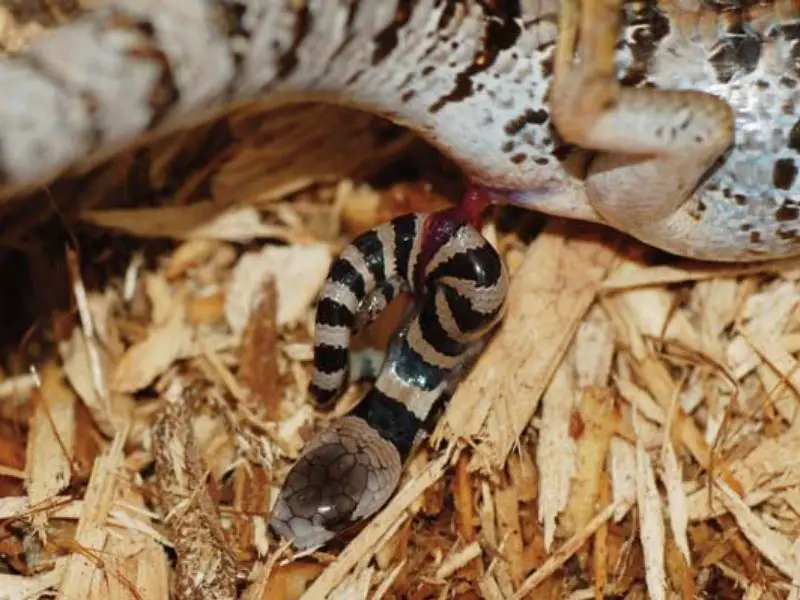
Pink-tongued skinks have live births, and breeding these lizards is easy. The skinks reach sexual maturity after about two years.
To breed a pair of pink tongue lizards, follow these steps:
-
- Place two healthy males and two healthy females in a 50-gallon enclosure
- To prevent fighting, return the male and the other pair of lizards to their home tanks after you have noticed breeding take place. The female’s gestation period will last for around 100 days
- The female will give birth to up to between 10 and 20 neonates, born around one minute apart
- The neonates are independent from birth. Move them to their own separate tanks and feed them chopped-up mealworms and other small foods every two days
- The neonates are ready to sell once they reach eight weeks old
Choosing and Buying a Pink-Tongued Skink
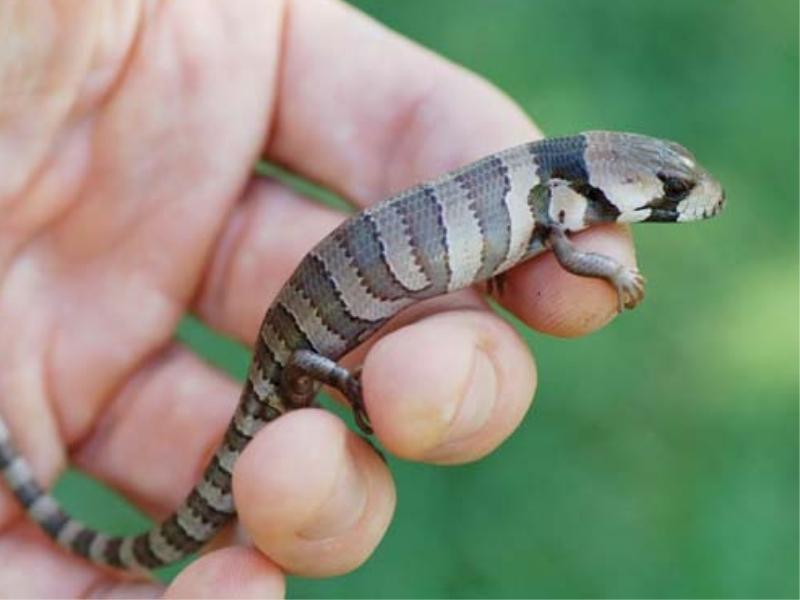
The average cost of a pink-tongued skink is $200 to $275. These skinks are widely available in pet stores, but buying from a reputable breeder is best to ensure the skink is healthy and well-bred.
Most pink-tongued skinks are captive-bred because of the difficulty in shipping the skinks from their natural habitat. When choosing a lizard, check for signs of good health like bright, alert eyes, and alert behaviors, like tongue flicking. Avoid lizards that look underweight, swollen, or lizards with discharge around their eyes or mouths.

